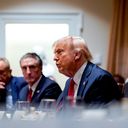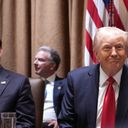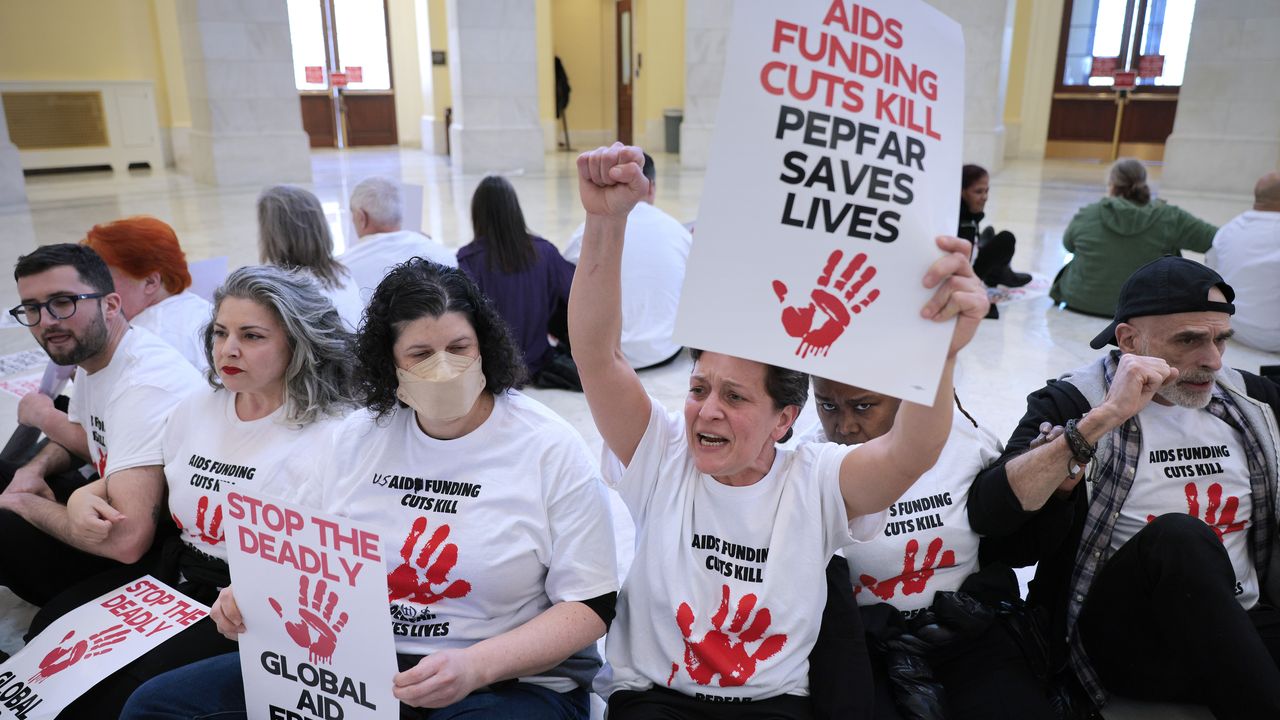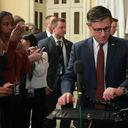Canada, Mexico tariffs still on track for next week despite Cabinet confusion
The White House still plans to implement 25% tariffs on imports from Canada and Mexico next week, at least for now — despite comments from President Trump on Wednesday that raised hopes of another delay.
Why it matters: The Trump administration has announced a slew of tariffs that could take effect on their respective deadline, or ultimately be pushed off — a prime backdrop for confusion.
The intrigue: That confusion was on full display in the immediate whipsaw in financial markets.
- The prospect of another delay for the 25% tariffs outlined in a White House executive order earlier this month — which had already been paused for 30 days — sent the U.S. dollar sharply lower against the Canadian dollar and Mexican peso, before recovering.
Catch up quick: Trump told reporters on Wednesday that the 25% tariff on imports from North American allies would take effect on April 2.
- Commerce Secretary Howard Lutnick quickly added that the "big transaction" would be April 2, but the "fentanyl-related" tariffs would be re-evaluated at the end of the 30-day pause on March 4.
Context: April 2 is the deadline for reciprocal tariffs that Trump previously announced, a senior White House official clarified to Axios.
- That official added that the 25% tariffs specific to Canada and Mexico were still on pause until next week, as originally thought. The administration has not made a decision whether to extend that pause or not.
- Lutnick told reporters that the Canadian and Mexican officials had to "prove to the president" that they had made progress on tighter border controls.
What to watch: The Commerce Department was previously ordered to draw up plans to impose tariffs on nations that the administration decides has unfair trading practices, a report due on April 1.
- That would allow Trump to put any tariffs in place the following day. Canada and Mexico could get hit in this order, too.
That is separate from another order that raises tariffs on all steel and aluminum imports to 25%, set to take effect on March 12.
- Trump said Tuesday that the Commerce Department would investigate whether to slap tariffs on copper imports.
- Trump on Wednesday told reporters that the administration was also looking into tariffs on European imports, particularly autos — though it was unclear if that was a new announcement or would come with the pending Commerce study.
- He's also hinted at future tariffs on semiconductors, pharmaceuticals, cars and lumber, but without setting any dates.
The bottom line: So far the Trump administration has implemented, not just announced, tariffs of 10% on all imports from China.
- If the administration makes good on some or all of its other tariff threats, keeping up with Trump trade policy might get that much harder.





